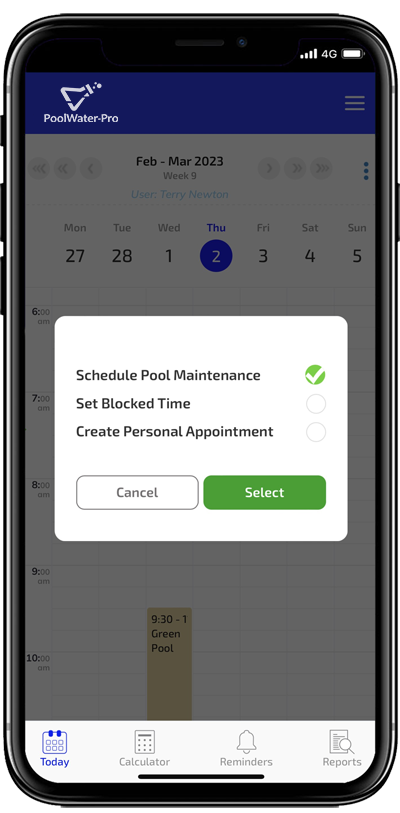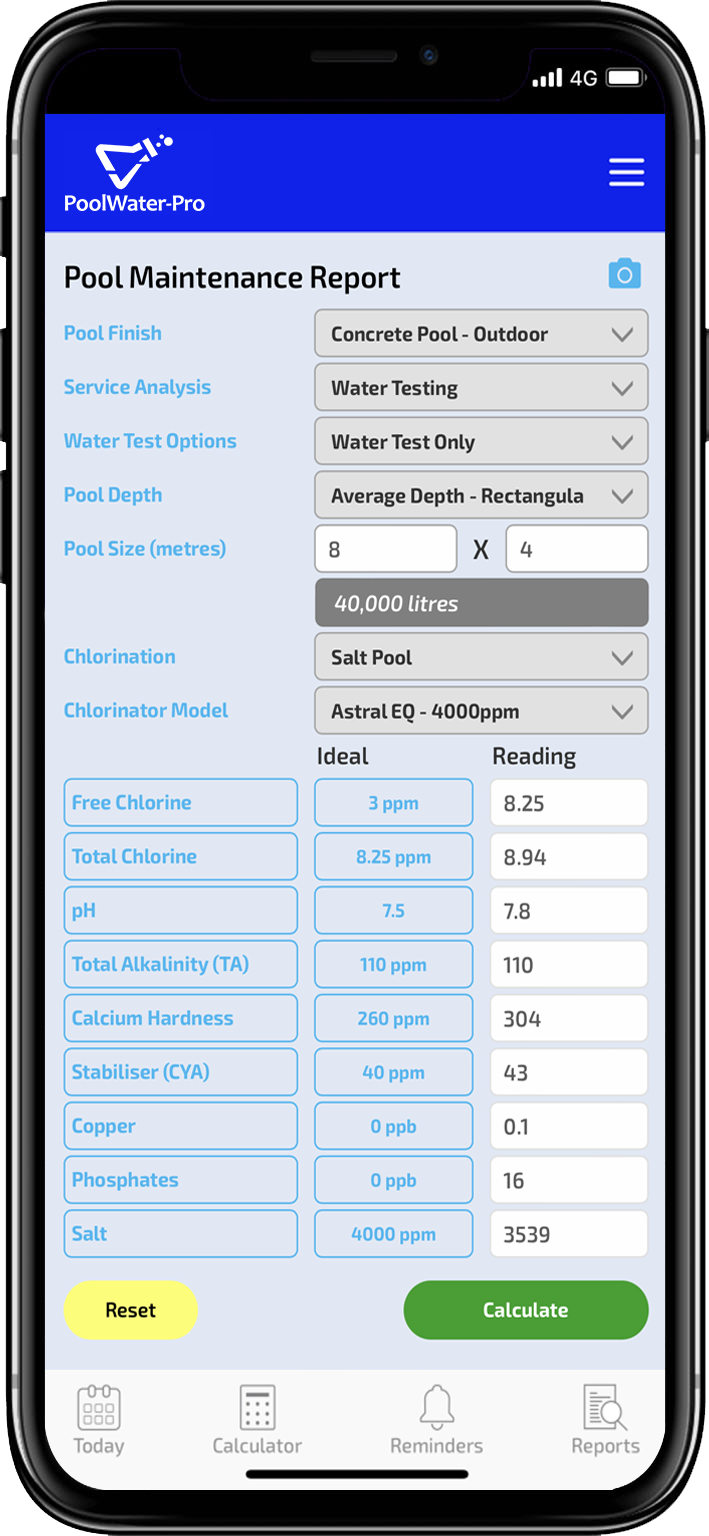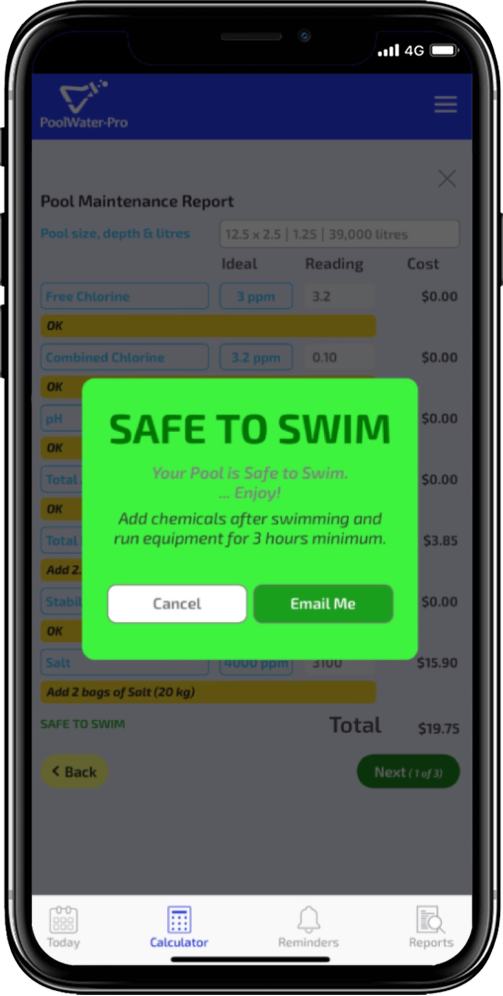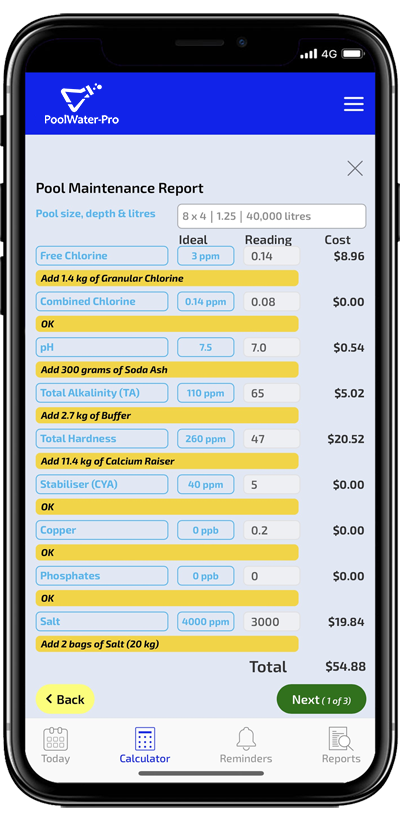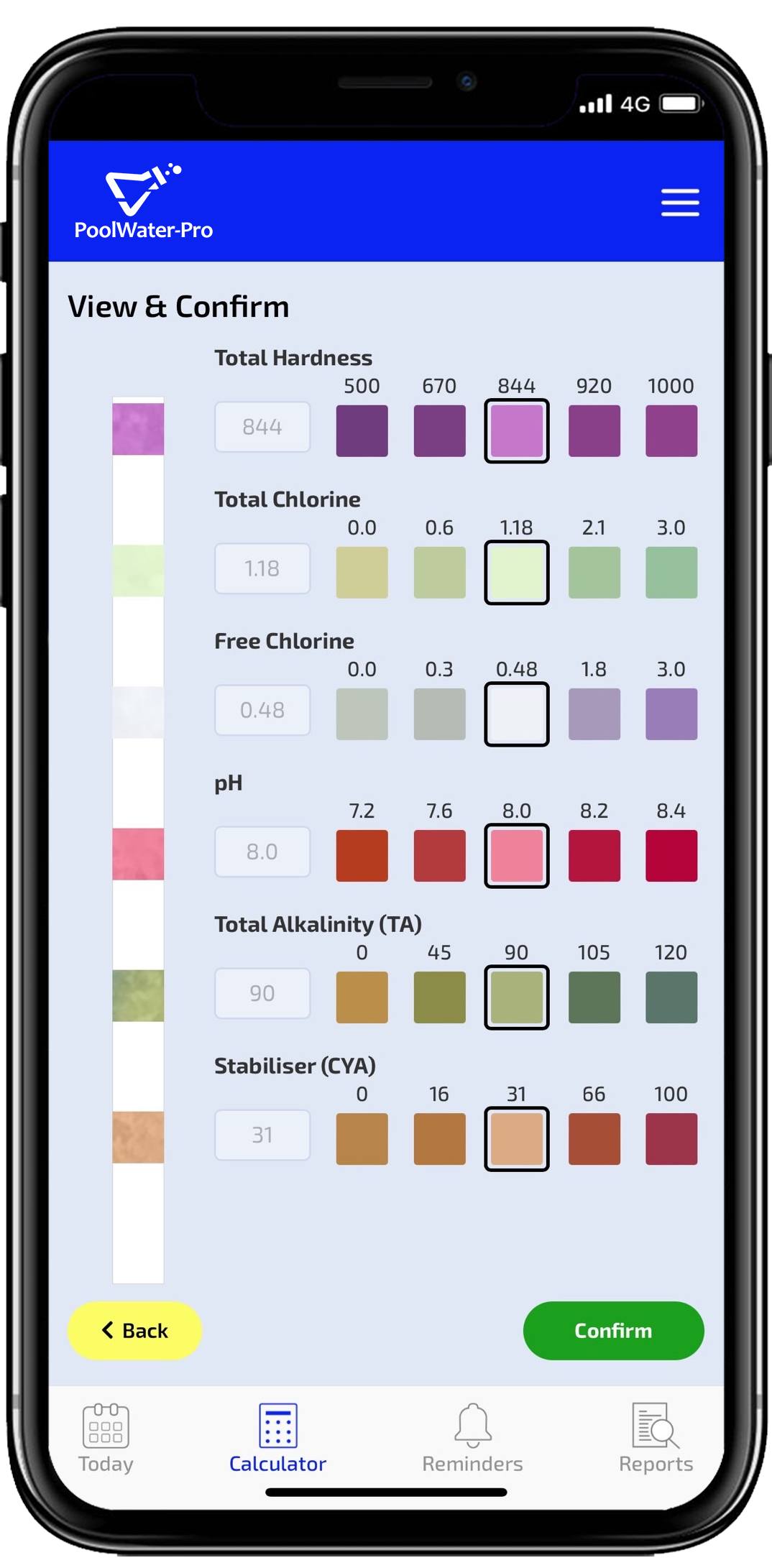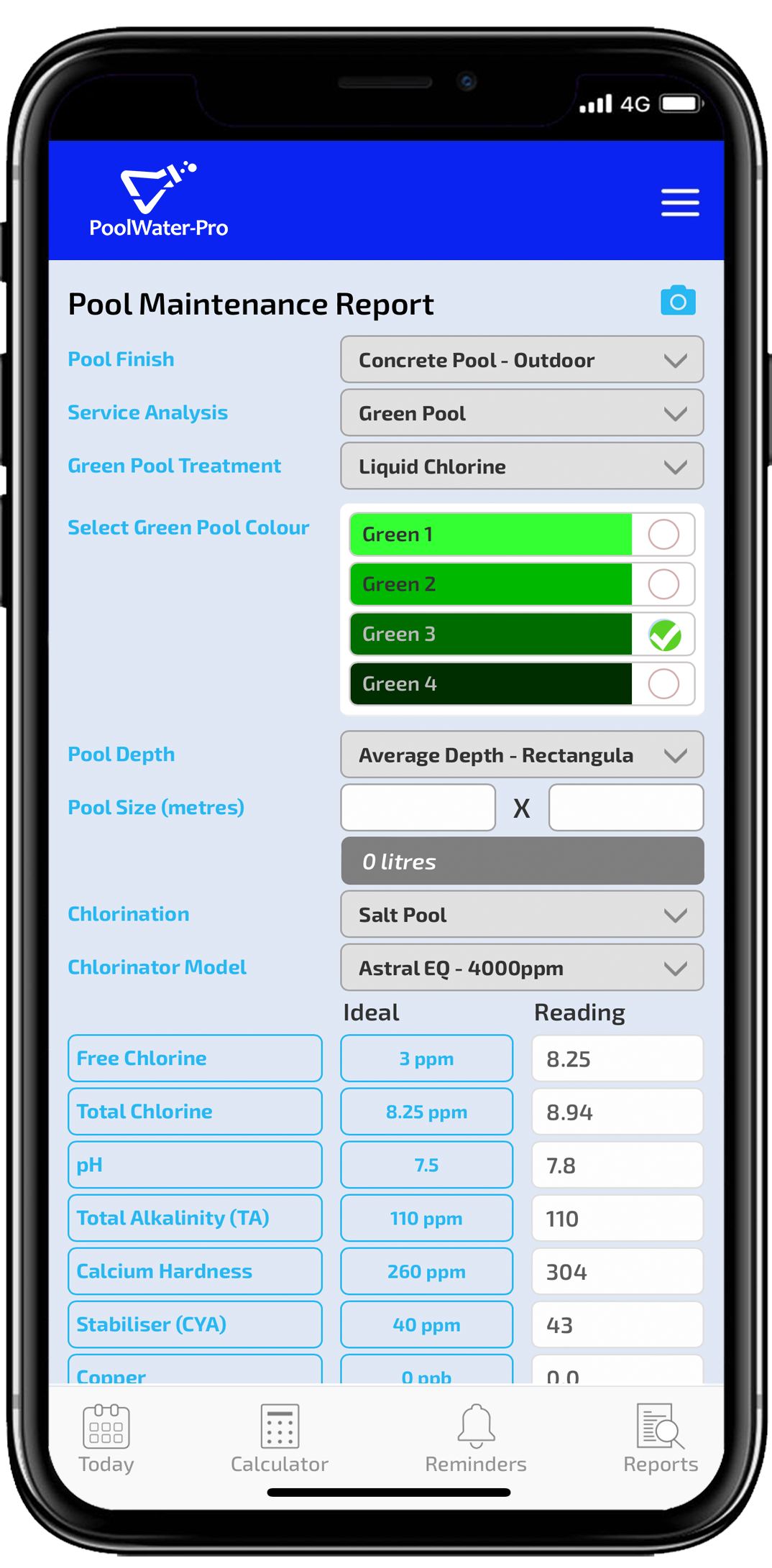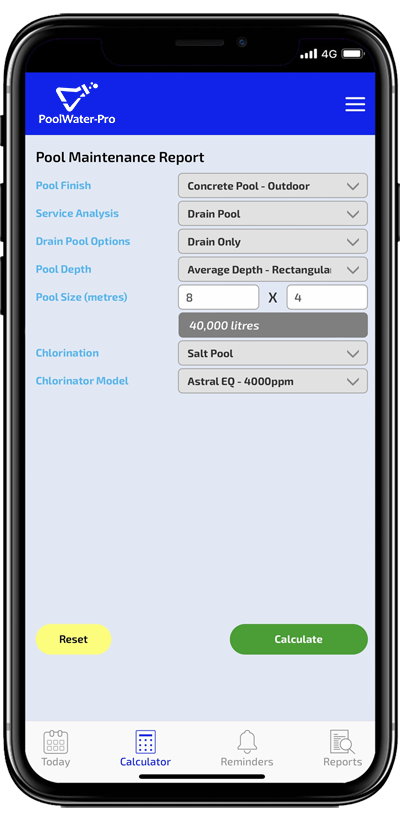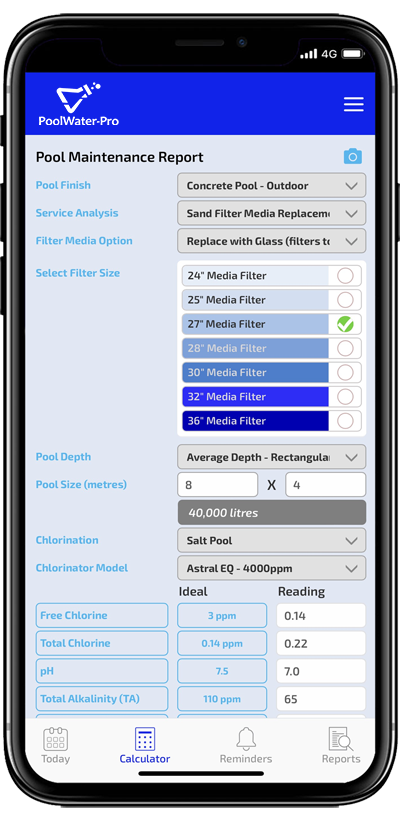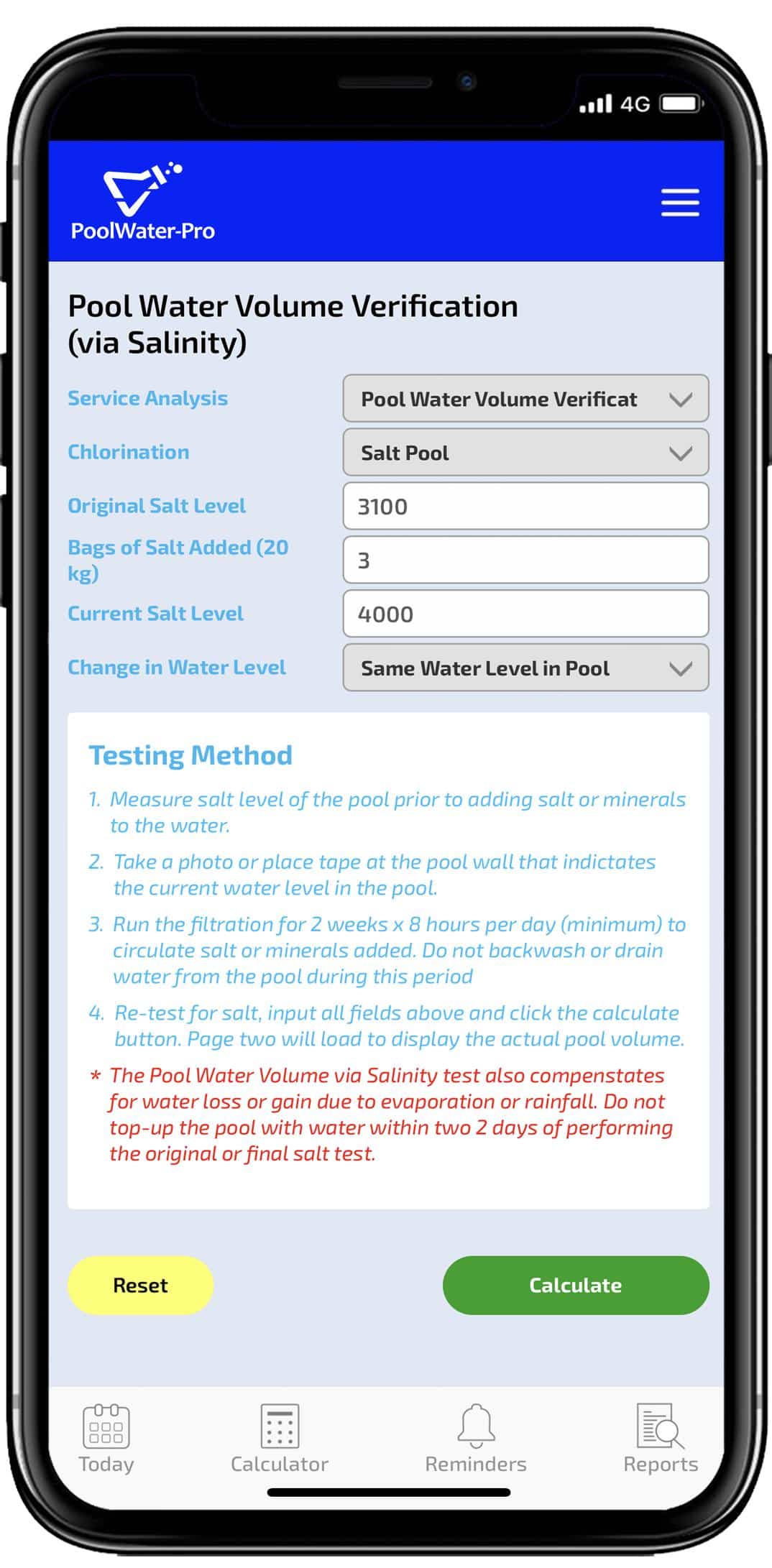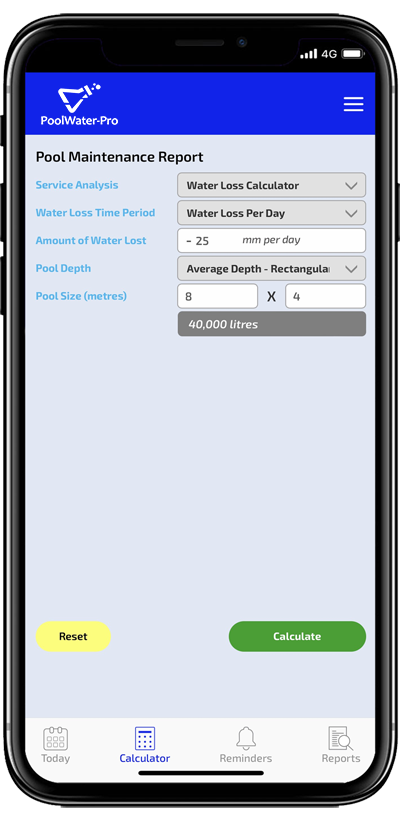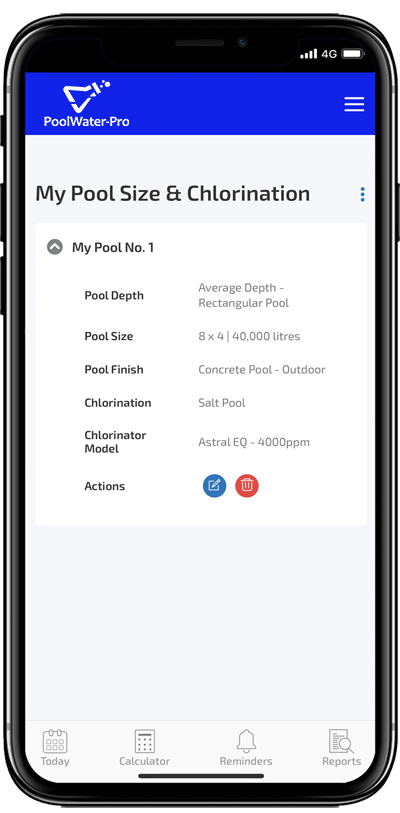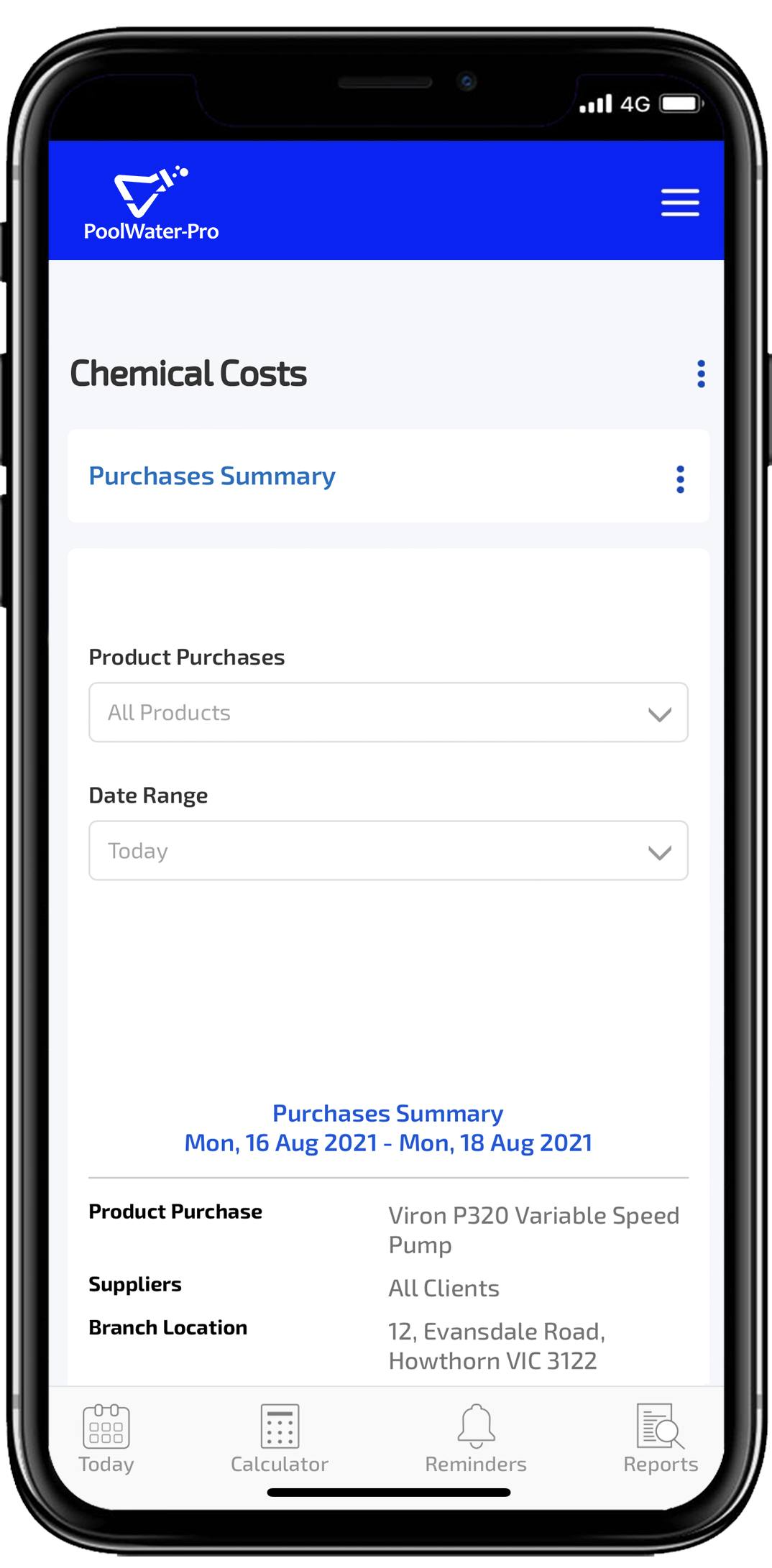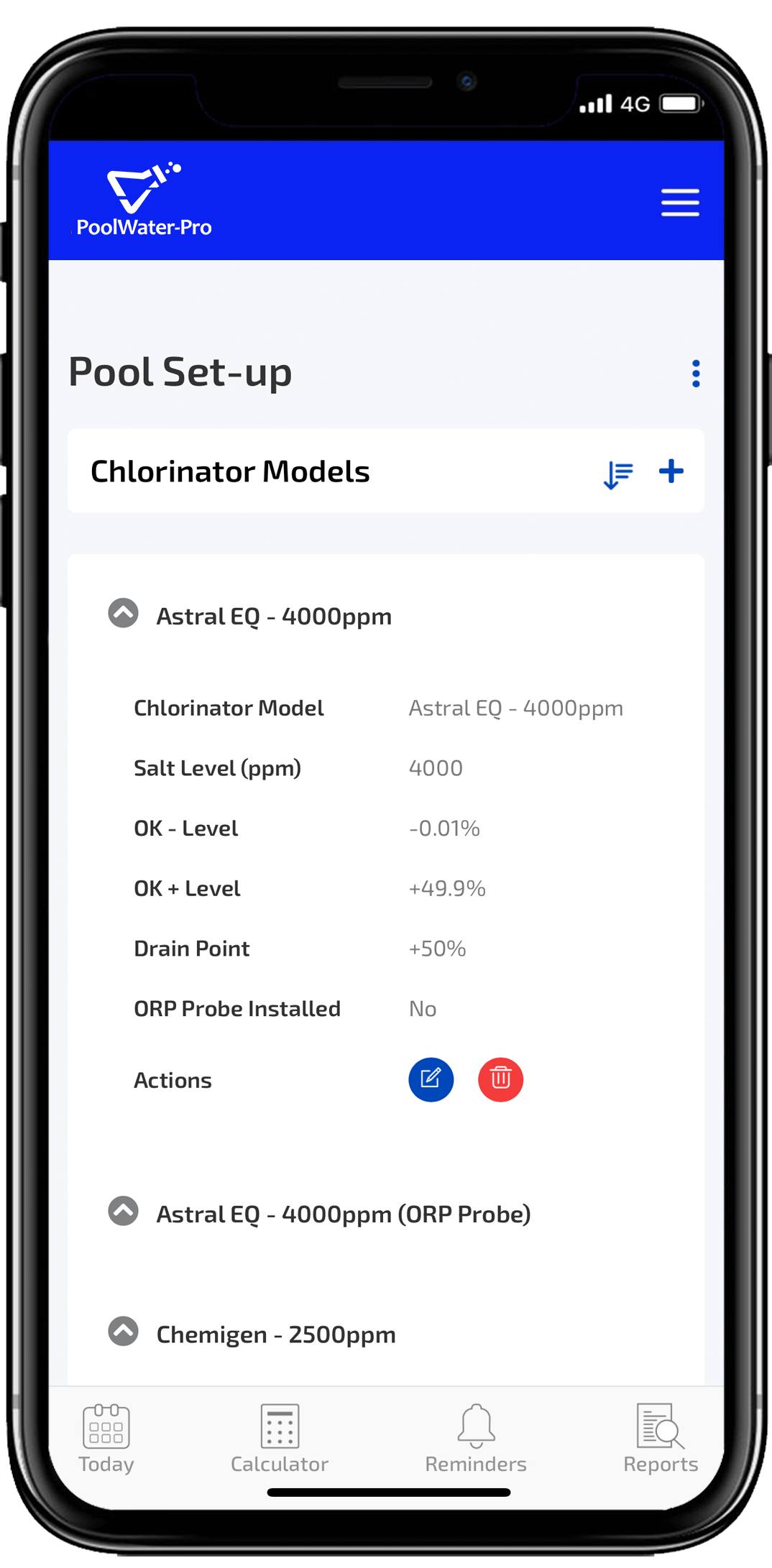Why is My Pool Green?
Having to deal with a green pool is a common challenge that many home owners have to address at some time and is simply a part of owning pool. Knowing the reason for your pool turning green is a good first step, so your pool doesn’t turn green again immediately after treatment. Low chlorine levels are usually the reason for green pools, but there are many factors that can contribute to the cause.
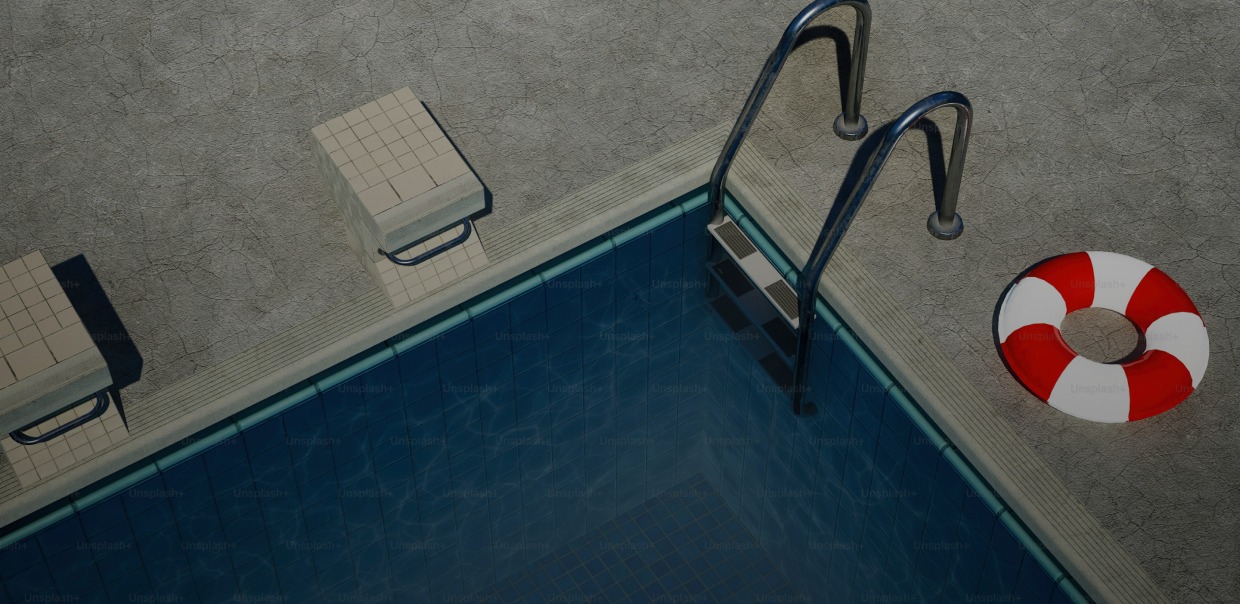
- Incorrect Chlorinator Set-up
- Low Water Levels
- Equipment Failure or Power Outage
- Imbalanced Chemical Levels
- Low or High Stabiliser Levels
- Low or High Salt Levels
- Pollen
- Metals
- Identifying Algae & Treatment
- Green Algae
- Mustard (or yellow) Algae
- Black-spot Algae
Incorrect Chlorinator Set-up
For a chlorinator without sensor probes, it is necessary to adjust chlorine output and running time in order to achieve adequate chlorine levels. A chlorinator with sensor probes needs the ORP level and running time increased or decreased monthly, to have the chlorinator producing the correct amount of chlorine.
The target range for chlorine levels is 1-3 ppm, with 3 ppm being ideal.
It’s best to test the water just before sundown, because the sun’s UV rays have exhausted chlorine levels for the day and reaching 3ppm at this time is the goal.
During winter months you’ll be aiming to reduce chlorine levels and during the summer period striving to increase them.
For manually chlorinated pools, not adding enough chlorine to reach ideal chlorine levels could be the cause of your green pool.

Low Water Levels
Insufficient water levels in your pool can affect the operation of your pump.
Regularly monitor and maintain your pool’s water level so filtration and chlorination continue to function.
During summer months monitoring your pool for evaporation is requiredweekly or more frequently during hot and windy periods.

Equipment Failure or Power Outage
An issue with your chlorinator, filter pump, equipment controller or a power failure can cause your equipment to stop working.
If equipment isn’t operating, your chlorinator won’t produce chlorine, initially causing your pool to turn cloudy as algae develops. Over time, the water will become darker shades of green.

Imbalanced Chemical Levels
Some pool chemical experts believe that chlorine is the most important chemical in your pool. Others argue that it’s pH, because if pH isn’t at the correct levels, chlorine can’t do its job properly.
pH levels above 7.8 will reduce chlorine’s effectiveness, which can lead to algae growth.

Low or High Stabiliser Levels
Stabiliser (CYA) acts like sunscreen for chlorine and is needed in outdoor pools to maximise chlorine’s effectiveness.
Stabiliser not only extends the life of chlorine, but also reduces chlorine consumption.
On a hot summer day due to UV exposure, your pool could lose up to 80% of its chlorine within 2 hours.
With the right levels of stabiliser, your pool will only lose about 20% over the same time period.
Free chlorine should be 7.5% of stabiliser levels, which is why a chorine target of 3ppm equals a stabiliser level of 40ppm.
High stabiliser reduces chlorine’s effectiveness, which can also be a green pool cause.

Low or High Salt Levels
Chlorinators need a minimum amount of salt to be able to generate chlorine, but this will vary depending on the chlorinator manufacturer.
Check monthly that your salt levels are within manufacturer’s recommendations. Use an electronic salt meter for undertaking your salt tests.
High salt levels can lead to corrosion of electrodes or cell plates and could cause malfunction or failure of the chlorinator.

Pollen
Pollen can be carried into your pool by the wind or rain.
Pollen is harmless to yourself or your pool and is easily removed.
Pollen provides a food source for algae and can contribute to its growth.

Metals
Pool water with low pH coming into contact with copper pipes, heat exchangers, fittings or fixtures can result in copper leaching into the water.
Copper based algaecides or imbalanced pool water with high levels of copper can also lead to green water.
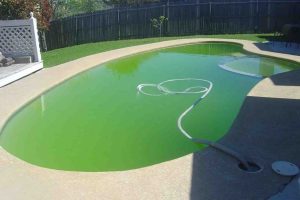
Identifying Algae & Treatment
There are three main types of algae that you may find in your pool, below are description of each to help you with identification and treatment.

Green Algae
To rid your pool of green algae you’ll need to use metal remover, phosphate remover, super-shock chlorine and copper-based algaecide.
After the first phase of the treatment, your water may appear blue, but very cloudy. The white cloudiness you see is the dead algae suspended at various levels in the water.
Depending on the severity of the green algae, your pool water could be cleared with clarifiers using your filter to assist.
Granular flock is typically only used if quick results are needed in clearing the water.
Once your pool is clear, all the dead algae will settle on the bottom of your pool and will be vacuumed to waste, so it won’t return to your pool through the filter.
Sometimes more than one treatment is required to clear your pool of green algae and draining your pool is a last resort and usually unnecessary.

Mustard (or yellow) Algae
Mustard algae is a rare form of algae and mostly usually found in warmer climates.
Mustard algae isn’t slimy like green algae and is often mistaken for sand or dirt in your pool.
It usually resides on walls and in the shady side of your pool.
Mustard algae can easily be brushed away, but will return if not treated the same as green algae. Mustard algae is stubborn and more resistant to chlorine than green algae.
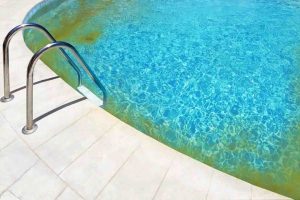
Black-spot Algae
Black-spot algae (or black algae) is very dark green, appearing black when in heavy bloom and is the hardest algae to get rid of.
Black algae has to be introduced into the pool and it comes from the ocean, lakes, rivers, or any other body of water where this algae is present.
It can also be introduced into your pool through bathing suits, towels, or other equipment such as toys, etc, that were used in a body of water that contains black algae and haven’t been cleaned thoroughly.
Black algae thrive in areas of your pool that have low circulation such as steps or corners. Black-spot algae has many layers that protect it from residual chlorine.
The roots of black algae will penetrate deep into the plaster of concrete pools or the grout in tiled pools. Black-spot algae doesn’t grow in fibreglass or vinyl liner pools.
Getting rid of black algae requires the combination of specialised chemicals, algaecide, super chlorination, plus scrubbing and scrubbing walls, steps and other affected areas of your pool with a wire brush.
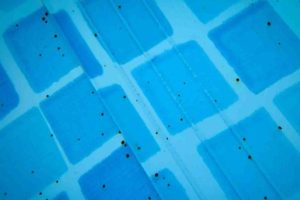
For a chlorinator without sensor probes, it is necessary to adjust chlorine output and running time in order to achieve adequate chlorine levels. A chlorinator with sensor probes needs the ORP level and running time increased or decreased monthly, to have the chlorinator producing the correct amount of chlorine.
The target range for chlorine levels is 1-3 ppm, with 3 ppm being ideal.
It’s best to test the water just before sundown, because the sun’s UV rays have exhausted chlorine levels for the day and reaching 3ppm at this time is the goal.
During winter months you’ll be aiming to reduce chlorine levels and during the summer period striving to increase them.
For manually chlorinated pools, not adding enough chlorine to reach ideal chlorine levels could be the cause of your green pool.
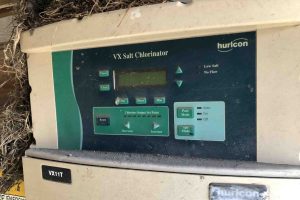
Insufficient water levels in your pool can affect the operation of your pump.
Regularly monitor and maintain your pool’s water level so filtration and chlorination continue to function.
During summer months monitoring your pool for evaporation is requiredweekly or more frequently during hot and windy periods.
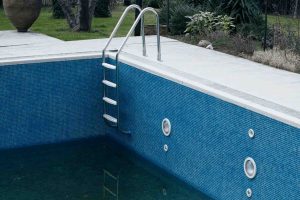
An issue with your chlorinator, filter pump, equipment controller or a power failure can cause your equipment to stop working.
If equipment isn’t operating, your chlorinator won’t produce chlorine, initially causing your pool to turn cloudy as algae develops. Over time, the water will become darker shades of green.
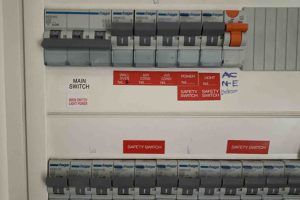
Some pool chemical experts believe that chlorine is the most important chemical in your pool. Others argue that it’s pH, because if pH isn’t at the correct levels, chlorine can’t do its job properly.
pH levels above 7.8 will reduce chlorine’s effectiveness, which can lead to algae growth.

Stabiliser (CYA) acts like sunscreen for chlorine and is needed in outdoor pools to maximise chlorine’s effectiveness.
Stabiliser not only extends the life of chlorine, but also reduces chlorine consumption.
On a hot summer day due to UV exposure, your pool could lose up to 80% of its chlorine within 2 hours.
With the right levels of stabiliser, your pool will only lose about 20% over the same time period.
Free chlorine should be 7.5% of stabiliser levels, which is why a chorine target of 3ppm equals a stabiliser level of 40ppm.
High stabiliser reduces chlorine’s effectiveness, which can also be a green pool cause.

Chlorinators need a minimum amount of salt to be able to generate chlorine, but this will vary depending on the chlorinator manufacturer.
Check monthly that your salt levels are within manufacturer’s recommendations. Use an electronic salt meter for undertaking your salt tests.
High salt levels can lead to corrosion of electrodes or cell plates and could cause malfunction or failure of the chlorinator.

Pollen can be carried into your pool by the wind or rain.
Pollen is harmless to yourself or your pool and is easily removed.
Pollen provides a food source for algae and can contribute to its growth.

Pool water with low pH coming into contact with copper pipes, heat exchangers, fittings or fixtures can result in copper leaching into the water.
Copper based algaecides or imbalanced pool water with high levels of copper can also lead to green water.

There are three main types of algae that you may find in your pool, below are description of each to help you with identification and treatment.

To rid your pool of green algae you’ll need to use metal remover, phosphate remover, super-shock chlorine and copper-based algaecide.
After the first phase of the treatment, your water may appear blue, but very cloudy. The white cloudiness you see is the dead algae suspended at various levels in the water.
Depending on the severity of the green algae, your pool water could be cleared with clarifiers using your filter to assist.
Granular flock is typically only used if quick results are needed in clearing the water.
Once your pool is clear, all the dead algae will settle on the bottom of your pool and will be vacuumed to waste, so it won’t return to your pool through the filter.
Sometimes more than one treatment is required to clear your pool of green algae and draining your pool is a last resort and usually unnecessary.

Mustard algae is a rare form of algae and mostly usually found in warmer climates.
Mustard algae isn’t slimy like green algae and is often mistaken for sand or dirt in your pool.
It usually resides on walls and in the shady side of your pool.
Mustard algae can easily be brushed away, but will return if not treated the same as green algae. Mustard algae is stubborn and more resistant to chlorine than green algae.

Black-spot algae (or black algae) is very dark green, appearing black when in heavy bloom and is the hardest algae to get rid of.
Black algae has to be introduced into the pool and it comes from the ocean, lakes, rivers, or any other body of water where this algae is present.
It can also be introduced into your pool through bathing suits, towels, or other equipment such as toys, etc, that were used in a body of water that contains black algae and haven’t been cleaned thoroughly.
Black algae thrive in areas of your pool that have low circulation such as steps or corners. Black-spot algae has many layers that protect it from residual chlorine.
The roots of black algae will penetrate deep into the plaster of concrete pools or the grout in tiled pools. Black-spot algae doesn’t grow in fibreglass or vinyl liner pools.
Getting rid of black algae requires the combination of specialised chemicals, algaecide, super chlorination, plus scrubbing and scrubbing walls, steps and other affected areas of your pool with a wire brush.

Introducing Effective Solutions
Simplify your pool maintenance routine with POOLWATER-PRO. Our software turns test-strips into accurate digital readings, right from your phone. Get instant alerts to know if your pool is safe to swim, plus any chemicals needed.
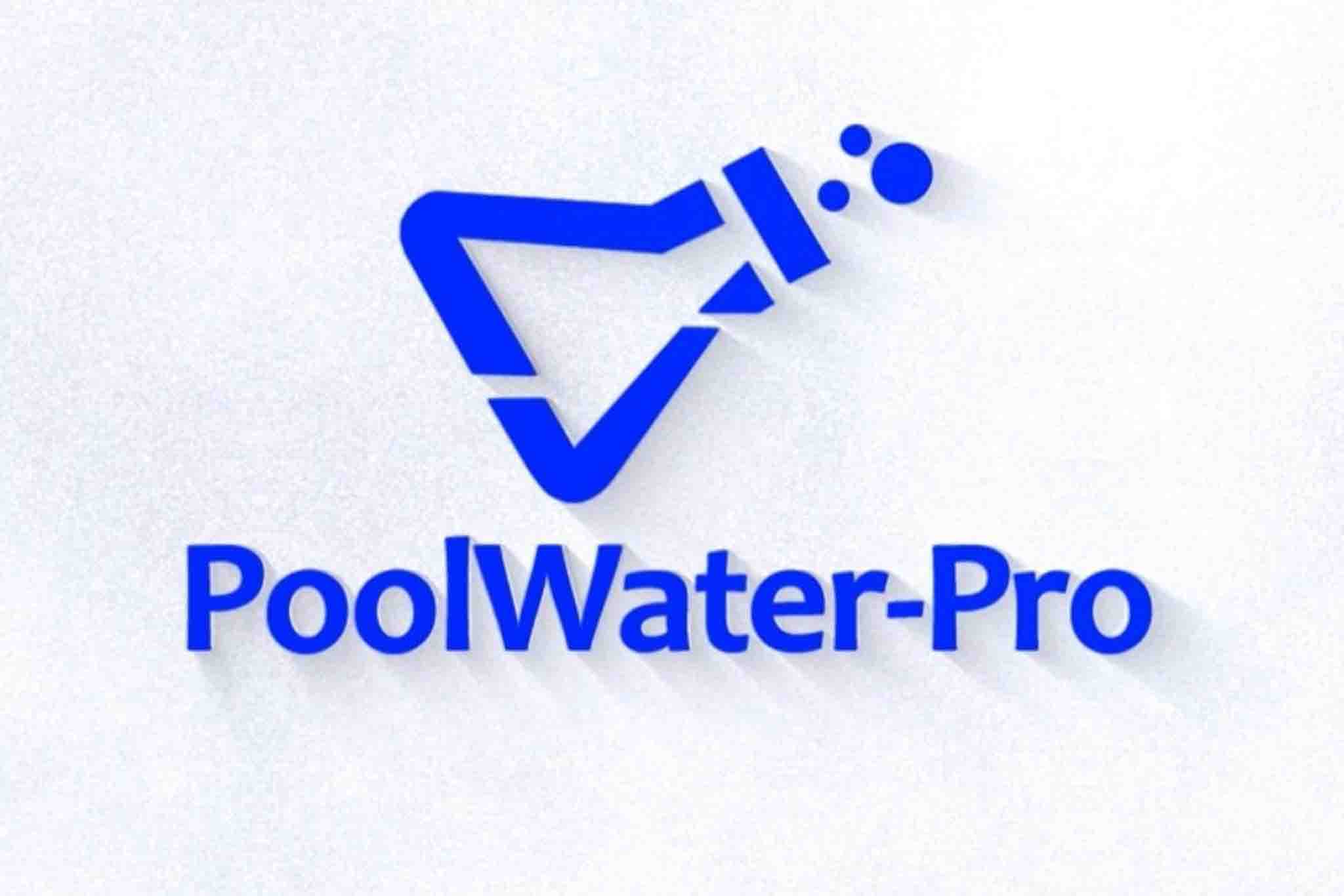
Introducing Effective Solutions
Simplify your pool maintenance routine with POOLWATER-PRO. Our software turns test-strips into accurate digital readings, right from your phone. Get instant alerts to know if your pool is safe to swim, plus any chemicals needed.

Your Path to Clarity
Watch this quick explainer video to see the platform’s features and how it can make pool care hassle-free.
Watch this quick explainer video to see the platform’s features and how it can make pool care hassle-free.




